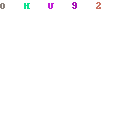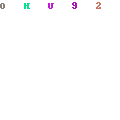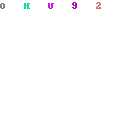 Pertinent Information of "Windows Command Processor Is Requesting Your Permission" Pop Up
Pertinent Information of "Windows Command Processor Is Requesting Your Permission" Pop Up
Once you get a pop-up for "windows command processor is requesting your permission", continuing clicks on no fails. Within a second of closing it, it popped up again, causing internet connectivity problems and interfering with the mouse control. Your anti-virus program may has helped you delete some of detected files, but the pop up issue simply restarts after a reboot. If you have such problem for a while, you'll get the ocassion that, after a restart, the pop up comes again once everything has loaded and opens two internet explorers, even though you use other browser as your default one. It is the high time that it downloads other infections to your system stealthily. Badly want to get rid of it, yet having tried many means that lead nowhere? Ask Tee Support experts 24/7 for professional and instant help here.
How "Windows Command Processor Is Requesting Your Permission" Pop Up Get into System?
Getting the pop up strongly suggests that your computer is compromised with multiple vulneribilities in your browser or holes in your system.
Usually, it spreads via spam email messages from unknown sources or including illegitimate YouTube content, clicking the free software from unidentified website, browsing unrecognized porn films and video. Therefore, behave when you are connected to the Internet.
How "Windows Command Processor Is Requesting Your Permission" Pop Up Is able to Do All the Evil Stuff?
To cause strange PC performances, it lurks deep in system to put everything in place. It generates files and folders in temp with random letter name containing copies of lkdatqln.exe, complexing the removal process with anti-virus program. It copies itself to numerous directories, upon execution, the pivotal files holding your usernames, passwords, your bank account information and similar data will be encrypted and manufactured as a file or test or in other shapes ready to be sent to the server that can be reached by cyber criminals. It also insert batches of its malicious processes to take a lot of CPU and memory which leads to slow connection and snail-like PC performance. Quick remove the pop up so that you won't be under the radar of other infections and protect your datum, steps hereinafter will do you a favor, should you have any question, you are welcome to contact Tee Support experts 24/7 online ready to help.
Manual Instruction to Tutor You How to Get Rid of "windows command processor is requesting your permission" Pop Up
Step1:Restart your system and get into the safe mode with networking As the computer is booting but before Windows launches, tap the "F8 key" continuously which should bring up the "Windows Advanced Options Menu" as shown below. Use your arrow keys to highlight "Safe Mode with Networking" option and press Enter key.

Step2:Please stop the processes listed below Press CTRL+ALT+DEL key to open Task Manager

random.exe
lkdatqln.exe
Step3:Go to the Registry Editor to delete all related entries listed below Click “Start” menu, hit “Run”, then type “regedit” click “OK”.


Related registry keys:
HKCU\Software\Microsoft\Windows\CurrentVersion\Internet Settings: "ProxyEnable" = 0
HKEY_CURRENT_USER\Software\Microsoft\Windows\CurrentVersion\Run
HKCU\Software\Microsoft\Windows\CurrentVersion\Run\Inspector %AppData%\Protector-[ rnd].exe
HKCU\Software\Microsoft\Windows\CurrentVersion\Internet Settings\WarnOnHTTPSToHTTPRedirect 0
Step4: Delete related files and folders
%Windows%\system32\[random].exe
%appdata%\[random].exe
C:\Program Files\Common Files\microsoft shared\ink\TabTip.exe
C:\Program Files\iPod\bin\iPodService.exe
C:\Program Files\Apoint\ApMsgFwd.exe
Video on How to Deal with Processes and Registries
Note: instruction above pertains to experienced PC users. Due to it's getting to your system with the help of other malware, you are very like to be under other PC attack even after you are out of the pop up situation. To get help instantly, you’re welcome to start a live chat with Tee Support experts 24/7 available here.
No comments:
Post a Comment